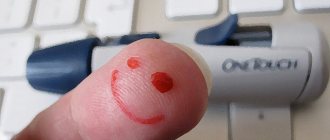Published: 10/09/2018 Updated: 06/24/2021
To prevent health problems from complicating life for you and your children, get tested regularly. But for many, the procedure of taking blood is not the most pleasant.
Understanding this, CITILAB chose the best technologies available on the laboratory services market. Sterile, disposable BD Vacutainer® vacuum systems are used to draw blood from a vein. They allow you to collect biomaterial for research quickly and painlessly, preventing the risk of infection with viral hepatitis and HIV, guaranteeing the highest quality of diagnosis.
It is important to understand that venous blood is used for almost all types of research - general clinic, biochemistry, hormones, allergology, etc. Most of them are completed in CITYLAB within one working day*!
Reliable
The likelihood of sample rejection with venous blood is minimized, since the sample is stored in a tube. When taking capillary blood, the formation of microclots due to the ingress of thromboplastin is high. This makes the sample unsuitable for research and requires a repeat procedure, which can be difficult to bear psychologically.
Be healthy!
* Some complex technological analyzes require several stages of execution, and therefore the result can only be obtained after several days.
Author:
Baktyshev Alexey Ilyich, General practitioner (family doctor), ultrasound diagnostics doctor, chief physician
The procedure for taking blood from a vein
1. General Provisions
The specialist taking blood samples for laboratory tests must strictly comply with the following requirements.
- The blood and other biological fluids of all patients must obviously be considered infected.
- A nurse or laboratory assistant is required to wear gloves when in contact with blood or other body fluids, mucous membranes or intact skin of all patients, when working with contaminated objects or surfaces, when performing venipuncture or skin puncture. Therefore, the specialist performing blood sampling is obliged to either disinfect gloves when moving from one patient to another, or change gloves if they are disposable. All other items (devices) used when collecting blood must be checked (serviceability, expiration date, sufficient quantity) and placed at the workplace so that they can be easily taken if necessary
- The specialist taking the blood must be emotionally prepared for the procedure. His appearance, mood, behavior, practical skills, ability to communicate with the patient are of great importance for establishing working contact with him.
- A specialist performing venipuncture or taking blood from a finger must prepare everything necessary for this: gloves, vacuum tubes, needles, tourniquet, 70% ethyl (or isopropyl) alcohol, gauze swabs, bandages, cotton balls. Equipment and supplies are placed so that they are easily accessible, but so that they do not interfere with the patient and he cannot accidentally touch, drop, or damage them.
2. Patient preparation
The procedural nurse or technologist should greet the patient in a friendly, professional manner. If the patient comes to the treatment room, you must ask: “What is your name?” or “What is your last name, first name, patronymic? Tell me your date of birth? or “How old are you?” Compare the patient’s answer with the information you have (the inscription on the application, data on the computer or on the appointment sheet). If the patient is in the room, knock on the door and enter. Compare your data about the patient with those that you can obtain from the patient himself or with those indicated on the sign on his bed (usually the sign indicates passport data and the medical history number). Tell the patient who you are and why you came. If you have difficulty identifying the patient, call the guard nurse and ask her for the necessary information. Pay special attention to identifying children who need blood drawn. Do not draw blood without accurate identification of the patient.
The procedural nurse or technologist should advise the patient that venipuncture or finger pricking is a somewhat painful procedure. You should never tell a patient: “It doesn’t hurt at all.” The patient may be afraid of the venipuncture procedure itself. Therefore, it is important to calmly and confidentially, in simple words, explain to him how blood is taken and that discomfort and pain usually disappear after inserting a needle into a vein. If the patient has ever had trouble with having blood drawn before, it is best to have them lie down during the procedure.
3. Patient position when taking venous blood samples
The position of the patient when taking venous blood samples is important in ensuring the comfort and safety of the patient, as well as the convenience of venipuncture for the procedural nurse. It is better to take blood if the patient is lying on a couch or sitting back in a chair; the risk of loss of consciousness by the patient should be taken into account. You always need to check if he is comfortable.
Sitting position. The patient sits comfortably in a chair with his arm resting on the armrest (or table) so that it is almost straight from wrist to shoulder and is well supported. She is slightly bent at the elbow. The procedural nurse should be in front of the patient in order to support him in case of fainting and prevent him from falling.
Lying position. The patient is positioned comfortably on his back. If additional support for the arm is needed, place a pillow under it. The arm should be almost straight (slightly bent at the elbow). The patient should not experience any physical strain while holding the arm in the desired position.
4. Technique for venipuncture and blood sampling using vacuum systems
4.1 Select the most accessible vein (the most full). Check your other arm to see if the veins are “better” there. Ask the patient to clench and unclench his fist 3-4 times (no more, since intense and prolonged clenching and unclenching of the fist can affect some blood parameters). Use your index finger to feel the vein and determine the direction of its course. Thrombosed veins are inelastic, resemble a rigid tourniquet, and are very easily displaced. Typically, the median (middle) cubital vein is used first. The flexure of the elbow joint is the best place for venipuncture. V.cephalica is the second vein convenient for puncturing. As a last resort, v.basilica is used. Veins on the hand, forearm, foot or ankle joint are used if it is not possible to take blood from the ulnar veins. If you cannot find a suitable vein, proceed as follows:
- try to find a vein on the other arm;
- ask the patient to make a fist;
- apply a tourniquet, but remember that the tourniquet can be tightened for a maximum of 2 minutes;
- massage your hand from wrist to elbow;
- try to feel the patient’s vein with your index finger;
- warm up the venipuncture site to increase blood flow: for this, a towel or cloth is moistened with water at 42 C, placed in a plastic bag and applied to the surface of the skin; after 3-10 minutes, hyperemia develops;
- ask the patient to move his arm lower.
If a suitable vein could not be found the first time, then it is necessary to remove the tourniquet and ask the patient to move his arm for 1-2 minutes and reapply the tourniquet. If the veins are thin, thinner needles are used.
Using a portable hand-held device to view peripheral veins greatly facilitates the search and, in most cases, avoids the use of these procedures.
4.2 Select the section of the vein from which you will draw blood. Apply a tourniquet to the patient's arm. The tourniquet is tightened tightly, but so that it does not cause pain. It is best to use cuffs from a pressure measuring device instead of a tourniquet. In this case, the pressure in the cuff should be lower than systolic, but higher than diastolic. This is ideal. The tourniquet can be applied for no more than 2 minutes, otherwise hemoconcentration will begin, which will lead to an increase in the concentration of proteins in the blood, the number of cells and coagulation factors.
4.3 Disinfect the puncture site using a swab (or napkin) moistened with alcohol (preferably 70% isopropanol solution or 1% iodine solution). Wipe the surface with it, moving the swab from the center to the periphery in a circle. The treated surface must dry. Nothing non-sterile should touch this surface. Only after gloves have been disinfected can venipuncture begin.
4.4 Check needles, holders and required vacuum tubes before performing venipuncture. The needle cap is removed immediately before venipuncture. If you accidentally touch the needle to something unsterile, the needle needs to be replaced.
4.5 Take the needle by the colored cap with your left hand, unscrew it with your right hand and remove the white protective cap.
4.6 Screw the freed end of the needle in the rubber cover into the holder and screw it until it stops.
4.7 Remove the colored protective cap from the needle.
4.8 With one hand, the procedural nurse uses her thumb to stretch the skin over the vein. The holder is held so that the needle is positioned with the cut upward and in relation to the skin at an angle of 15°. The skin and vein wall are pierced. Movements should be smooth but fast. The needle should not be immersed deeply. When the needle enters the vein, you will see this by the fact that the visual chamber fills with blood, the needle is pulled back a little. It is necessary to pay attention to whether the cut of the needle is under the skin. If this happens, then the vein is identified with the index finger of the left hand and the needle is directed forward to re-enter the vein. After this, the needle is not moved.
4.9 Take the holder with your left hand, and take the test tube in your right hand and insert its lid into the holder. Holding the protrusions of the holder with the index and middle fingers of your right hand, use your thumb to push the test tube onto the needle until it stops. If the patient's veins are “good,” the tourniquet can be loosened after the blood begins to flow into the vacuum tube. If the veins are small and/or difficult to puncture, it is best not to loosen the tourniquet, but for no more than 1 minute. Never remove the needle from the vein while the tourniquet is tight.
4.10 The vacuum tube should fill, and the blood will mix with the anticoagulant or preservative in the correct ratio. Each tube contains an amount of reagent strictly determined for the blood volume indicated on it. Tubes should be filled completely, within +10% of the specified volume (i.e. a 4.5 ml tube should be filled between 4 and 5 ml). An incorrect blood/reagent ratio in the sample will lead to erroneous test results. After filling the test tube to the required volume, remove it from the holder. Gently mix the contents of the filled test tube, inverting it the required number of times. Mixing is carried out carefully to avoid hemolysis. Never shake a vacuum tube! If there is a need for an additional number of blood samples in accordance with the application, then, without removing the needle from the vein, insert the next test tube into the holder. Draw blood into a second tube and, if enough blood is taken, disconnect the second tube from the needle.
4.11 If for some reason the blood stops flowing into the vacuum tube, the needle must be moved back and forth. This action usually improves the flow of blood into the vacuum tube. Then the needle should be turned half a turn, and the tourniquet, if it was tightened very tightly, should be loosened. Repeated puncture of the same vein is very painful, so it is not recommended. If none of the above procedures helped, then the needle should be removed and look for another place for venipuncture.
4.12 When two attempts at venipuncture fail, it is necessary to call on more experienced specialists to draw blood; in any case, be sure to inform your doctor about this and make an entry in your work journal.
4.13 Once blood is obtained, a sterile gauze swab is placed over the puncture site over the needle and the needle and holder are carefully removed, gently pressing the swab onto the puncture site while removing the needle. A strip of adhesive tape is placed on the tampon and skin, and the patient bends his arm at the elbow to press the tampon (for 10 minutes). If necessary, apply a pressure bandage to the puncture site to prevent a hematoma from forming.
4.14 Vacuum tubes with blood samples are placed in a rack.
4.15 Place the needle and holder in a special container for used needles.
4.16 All vacuum tubes are supplied with labels where the full name must be indicated. patient, medical history number, department, ward, date and time of blood collection, signature of the treatment nurse. Labels with required patient information should never be filled out in advance, as they can be easily mixed up with large numbers of samples.
4.17 Materials and disposable items used for venipuncture are placed in appropriate waste containers.
4.18 Immediately after completing the above procedures, label the blood samples taken by indicating your full name on the label of each vacutainer. patient, medical history number (outpatient card), date and time of blood collection, sign on each tube label.
5. Assessing the quality of blood samples taken
It is necessary to send high-quality blood samples to the centralized clinical laboratory; only in this case will the correct results of laboratory tests be obtained. After collecting blood samples from a particular patient, the procedural nurse must evaluate the quality of the samples obtained. This assessment is carried out by answering the questions below.
- Is the patient properly prepared for blood collection? Medications have been excluded, if possible?
- Was blood taken on an empty stomach? Is it really taken on an empty stomach?
- Are the samples required for testing taken from the correct patient and correctly labeled? Incorrectly labeled or unlabeled material delivered to the laboratory will not be accepted (discarded). When double-checking patient identification, new errors are possible, especially if it is carried out through the patient (i.e., “Did they take your blood? For what tests? Who took it?”). This is unacceptable, as it causes psychological trauma to the patient and undermines his trust in this medical institution.
- Is the anticoagulant chosen correctly? preservative? Has enough blood been drawn?
- Are the time parameters observed when taking samples: are they taken on time? Did the tourniquet application time exceed 2 minutes?
- The presence of hemolysis in a blood sample during visual assessment after centrifugation. If hemolysis is detected, it is necessary to inform the attending physician about this in order to decide on re-taking blood samples. In the referral, the nurse should indicate the presence of hemolysis in the sample and the decision of the attending physician.
6. Complications and possible difficulties when taking blood samples
- Fainting. To avoid this complication and its consequences, it is better to take blood when the patient is in a supine position.
- Hematoma. If a hematoma begins to appear, you must immediately remove the tourniquet and remove the needle from the vein, then apply a pressure bandage to the puncture site.
- Petechiae. This is usually a consequence of a violation of the blood coagulation system, so the specialist performing venipuncture or taking blood from a finger must be prepared for prolonged bleeding from the puncture. Such patients must be given a pressure bandage.
- Edema. It is better not to take blood where there is swelling, otherwise interstitial fluid will enter the blood and the results of the study will be distorted.
- Obesity. In obese people it is usually difficult to find a vein and puncture it. When blood is collected, a lot of interstitial fluid and blood clotting activators (tissue thromboplastin) can get into it.
- Damaged and sclerotic veins. Occurs in patients after repeated venipunctures (intravenous administration of drugs). When collecting blood for research, such veins should be avoided.
- Hemolysis. The causes of hemolysis can be: a needle for venipuncture that is too thin, very fast movements of the syringe piston, inaccurate (quick) blood transfusion from one container to another, very intense mixing (shaking), prolonged application of a tourniquet (more than 2 minutes). It must be remembered that one of the causes of hemolysis may be a physiological abnormality of red blood cells, which must be reported to the laboratory.
- Hemoconcentration. The causes of this complication are: prolonged application of a tourniquet, massage and compression of the blood collection site, sclerotic or occluded veins.
- Vein thrombosis after venipuncture. Usually occurs in patients with a tendency to hypercoagulability, and can also appear with repeated punctures in the same place.
- Infectious complications. They occur when the rules of asepsis and antisepsis are violated.
Are repeat studies needed?
Over time, the intensity of immunity, both in the case of a previous illness and after vaccination, decreases. According to infectious disease specialists, the higher the level of antibodies, the lower the risk of re-infection, as well as the likelihood of severe course and complications of COVID-19.
At the same time, it is recommended to do a repeat test to assess how the antibody level is falling no more than once every six months.
Sergey Karpukhin/TASS
What test can be used to check post-vaccination immunity?
This test is called “Quantitative determination of antibodies to the RBD domain of the S1 protein of the coronavirus (IgG antibodies)” (performed by chemiluminescent immunoassay of serum and plasma, Abbot).
This is a quantitative test for IgG antibodies. It will help assess the immune response both in case of infection (or previous COVID-19) and to monitor post-vaccination immunity.
When to do it:
- for a current or past infection no earlier than three weeks after the onset of symptoms or a positive PCR test result;
— to assess post-vaccination immunity three weeks after the second dose of the vaccine.
What the results say:
< 50.0 AU/mL negative:
antibodies to the pathogen are absent or at very low levels.
This may be a period of early infection or the patient may have impaired immune system function.
≥ 50.0 AU/mL positive:
there is an immune response to the infection or a post-vaccination response has formed.
Why do you need to take a PCR test for COVID-19?
This test is taken to check whether a person is sick or possibly a carrier of the virus (even if he does not have any symptoms of illness), whether he is currently excreting the virus from the upper respiratory tract, that is, is a source of infection for others.
This is the only test for tourists that has already become standard: upon entry, almost all countries require you to present a certificate of the test taken before departure. After returning from the trip, you will have to take the test twice more and upload the result to the government services portal.
In addition, you can take a PCR test to make sure that you are healthy, that is, to exclude an asymptomatic course of the disease. This may be necessary if, for example, you are going to meet elderly relatives and you do not want to risk their health. In addition, with the help of such testing you can check whether you have become infected with coronavirus if you know for sure that you have been in contact with someone who is sick.
Blood type and Rh factor
When registering at the antenatal clinic, the expectant mother is given a referral to determine her blood type and Rh factor. This is necessary even if the woman knows her blood type and has a stamp in her passport. This study is carried out once. But you should know that if the expectant mother has negative Rh blood, then the future dad also needs to undergo a similar test. If the father is found to have a positive Rh factor, the Rh-negative mother will have to donate blood once a month for the presence of antibodies to determine their titer (quantity) before the 20th week of pregnancy, and after the 20th week she will have to undergo this test at least once a month. once every 2 weeks or as prescribed by your doctor. Thus, blood from a vein must be taken 10-12 times during the entire pregnancy to determine the antibody titer.







